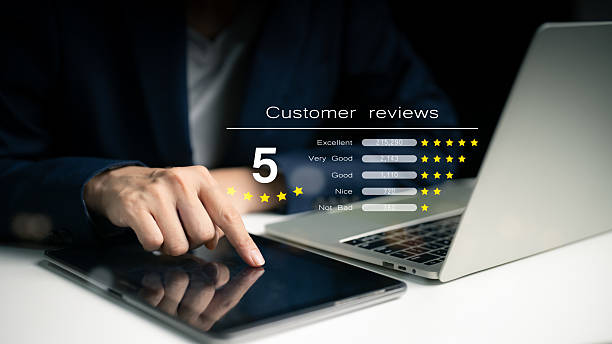Mobility challenges affect millions of people worldwide, ranging from temporary limitations due to injury to permanent conditions that require long-term adaptation. Whether you’re navigating a recent diagnosis, supporting a family member, or exploring options for yourself, understanding the full spectrum of available support can significantly improve quality of life and independence.
The landscape of mobility support has evolved dramatically in recent years, offering more personalized and effective solutions than ever before. From cutting-edge assistive technology to comprehensive therapy programs, multiple pathways exist to help individuals maintain or regain their mobility goals. Each person’s needs are unique, making it essential to explore various options and find the combination that works best for your specific situation.
Contents
Assistive Technology and Equipment
Modern assistive technology provides unprecedented opportunities for mobility independence. Wheelchairs have evolved far beyond basic manual models to include lightweight racing chairs, all-terrain options, and sophisticated power chairs with smart navigation features. Many users find that having multiple mobility aids serves different purposes throughout their daily lives.
Walking aids encompass a broad range of options designed for various stability needs. Canes, walkers, and crutches come in multiple configurations, including adjustable heights, ergonomic grips, and specialized tips for different surfaces. Newer innovations include smart canes with GPS navigation and obstacle detection features.
Home modification equipment can transform living spaces into accessible environments. Stairlifts, wheelchair ramps, grab bars, and accessible bathroom fixtures enable safe navigation throughout the home. Many modifications are temporary and portable, making them suitable for rental properties or changing needs.
Vehicle modifications open up transportation independence through hand controls, wheelchair lifts, and transfer seats. Professional driving evaluations help determine which modifications best suit individual needs and ensure safe operation.
Physical Therapy and Rehabilitation Services
Physical therapy remains a cornerstone of mobility support, offering personalized treatment plans that address specific limitations and goals. Modern physical therapy EMR systems help therapists track progress more effectively and coordinate care with other healthcare providers, ensuring comprehensive treatment approaches.
Occupational therapy focuses on adapting daily activities and environments to maximize independence. Occupational therapists assess home, work, and community environments to identify barriers and develop strategies for overcoming them. They also provide training on assistive devices and adaptive techniques.
Specialized rehabilitation programs target specific conditions such as spinal cord injuries, stroke recovery, or progressive neurological conditions. These intensive programs often combine multiple therapy disciplines and provide peer support opportunities with others facing similar challenges.
Aquatic therapy offers unique benefits for mobility training through water’s buoyancy and resistance properties. Many individuals find they can perform movements in water that are difficult or impossible on land, making it an valuable complement to traditional therapy approaches.
Community and Social Support Networks
Peer support groups connect individuals facing similar mobility challenges, providing practical advice, emotional support, and shared experiences. Many groups organize recreational activities, advocacy efforts, and educational workshops that build both skills and social connections.
Disability resource centers offer comprehensive information about local services, funding opportunities, and legal rights. These centers often maintain equipment lending libraries, provide transportation services, and connect individuals with appropriate support programs.
Adaptive sports programs provide recreational and competitive opportunities that promote physical fitness, social interaction, and personal achievement. Options range from wheelchair basketball and tennis to adaptive skiing, sailing, and martial arts programs.
Volunteer driver programs and specialized transportation services address mobility barriers in communities where public transportation is limited or inaccessible. Many areas offer door-to-door services specifically designed for individuals with mobility challenges.
Financial Assistance and Insurance Coverage
Insurance navigation requires understanding coverage options for equipment, therapy services, and home modifications. Medicare, Medicaid, and private insurance plans have different coverage criteria and approval processes that benefit from professional guidance.
Grant programs and charitable organizations provide funding for assistive equipment, home modifications, and therapy services not covered by insurance. National organizations often have local chapters that understand regional resources and application processes.
Loan programs for accessibility modifications offer low-interest financing options for home and vehicle adaptations. Some programs provide deferred payment options or forgiveness provisions based on income levels.
Veterans’ benefits include comprehensive mobility support services for service-related injuries or conditions. The VA system provides equipment, therapy, home modifications, and adaptive vehicle programs specifically designed for veterans’ needs.
Technology and Innovation Resources
Smart home technology integration enables voice control of lights, doors, temperature, and entertainment systems, reducing physical demands of daily living. These systems can be programmed to respond to individual preferences and needs.
Mobile apps provide navigation assistance, accessibility information about public spaces, and connections to ride-sharing services with wheelchair-accessible vehicles. Many apps crowdsource accessibility information to help users plan outings and travel.
Telehealth services expand access to medical care and therapy consultation, particularly valuable for individuals with transportation challenges. Remote monitoring devices can track health metrics and alert healthcare providers to changes requiring attention.
Research participation opportunities allow individuals to access cutting-edge treatments and contribute to advancing mobility solutions. Clinical trials for new therapies, devices, and treatments often provide access to innovative approaches before they become widely available.
Building Your Support Network
Creating an effective support system requires combining multiple resources and services to address your specific needs and goals. Start by assessing your current challenges and priorities, then explore options systematically rather than trying to implement everything simultaneously.
Healthcare providers, social workers, and disability advocates can help navigate complex systems and identify appropriate resources. Building relationships with knowledgeable professionals creates a foundation for accessing support as needs change over time.
Remember that mobility support is not one-size-fits-all. What works for others may not suit your situation, and your needs will likely evolve as you adapt and grow. Stay open to trying new approaches while building on solutions that prove effective for your lifestyle and goals.

